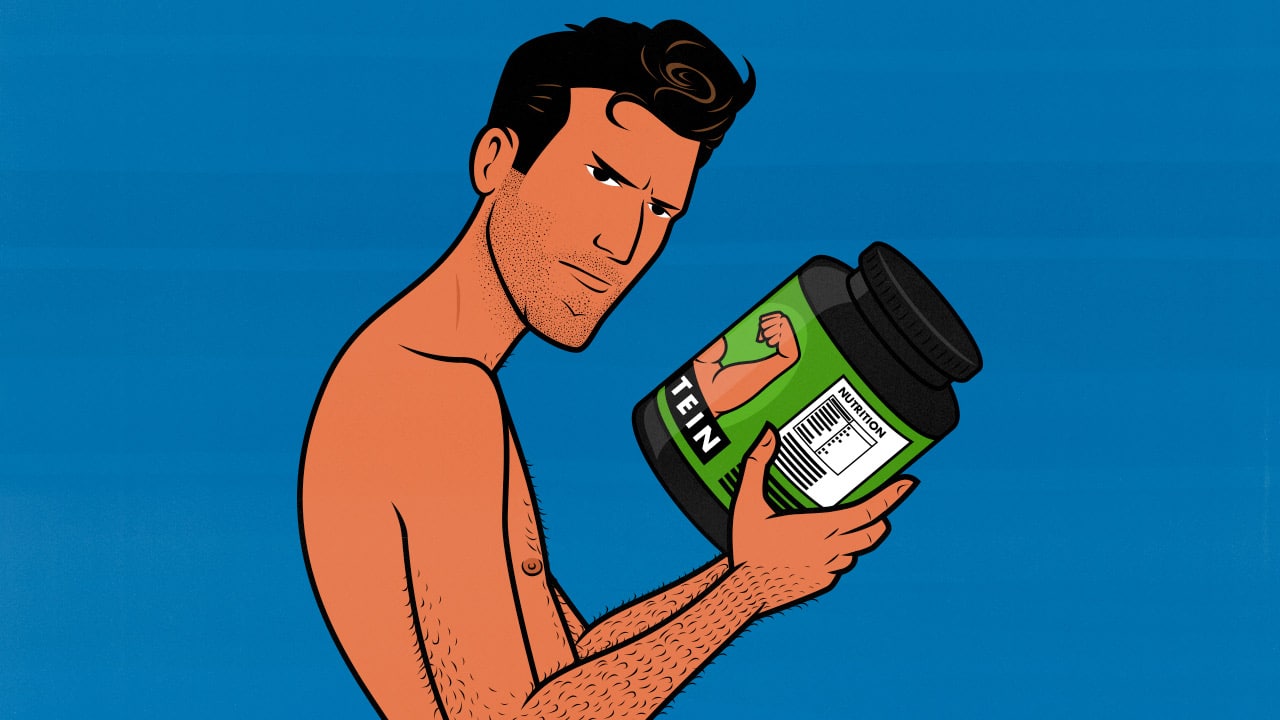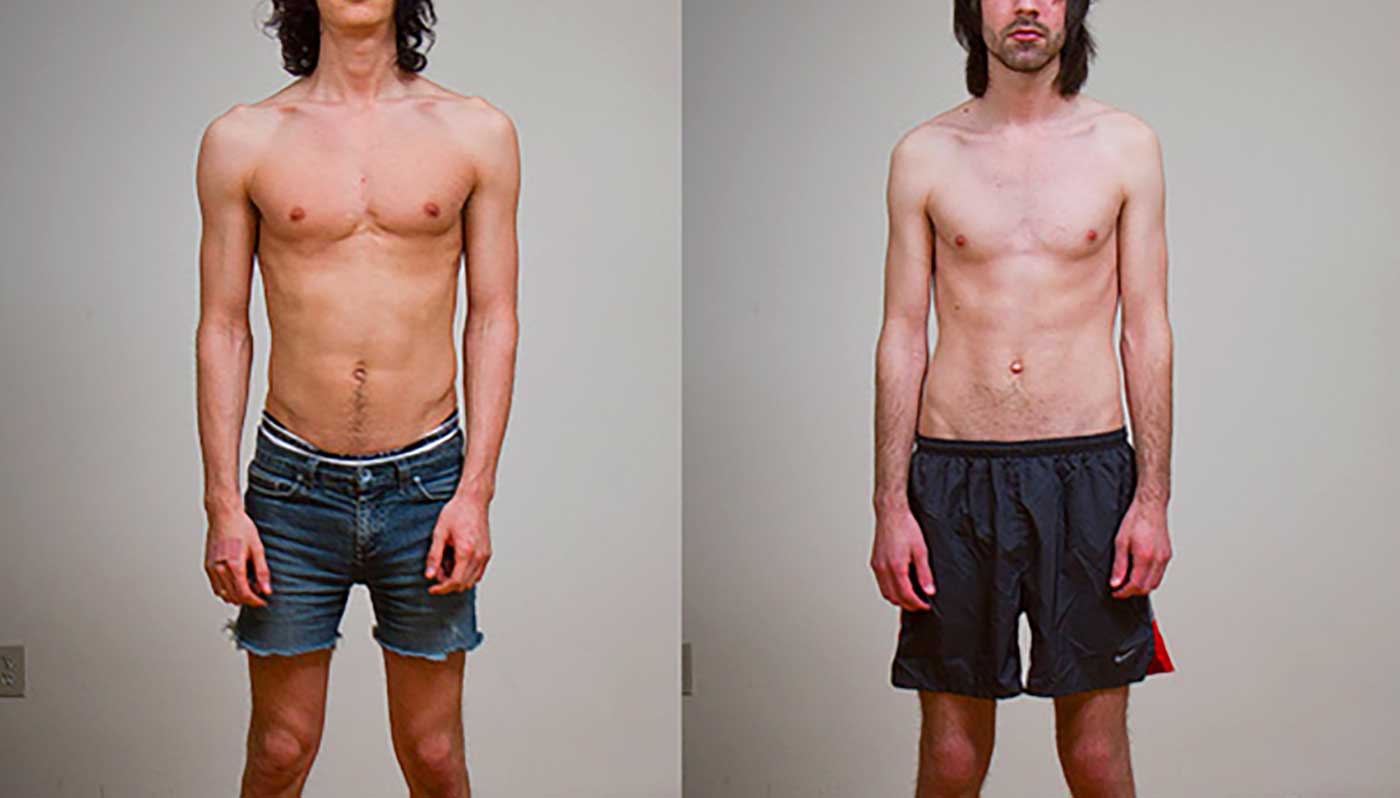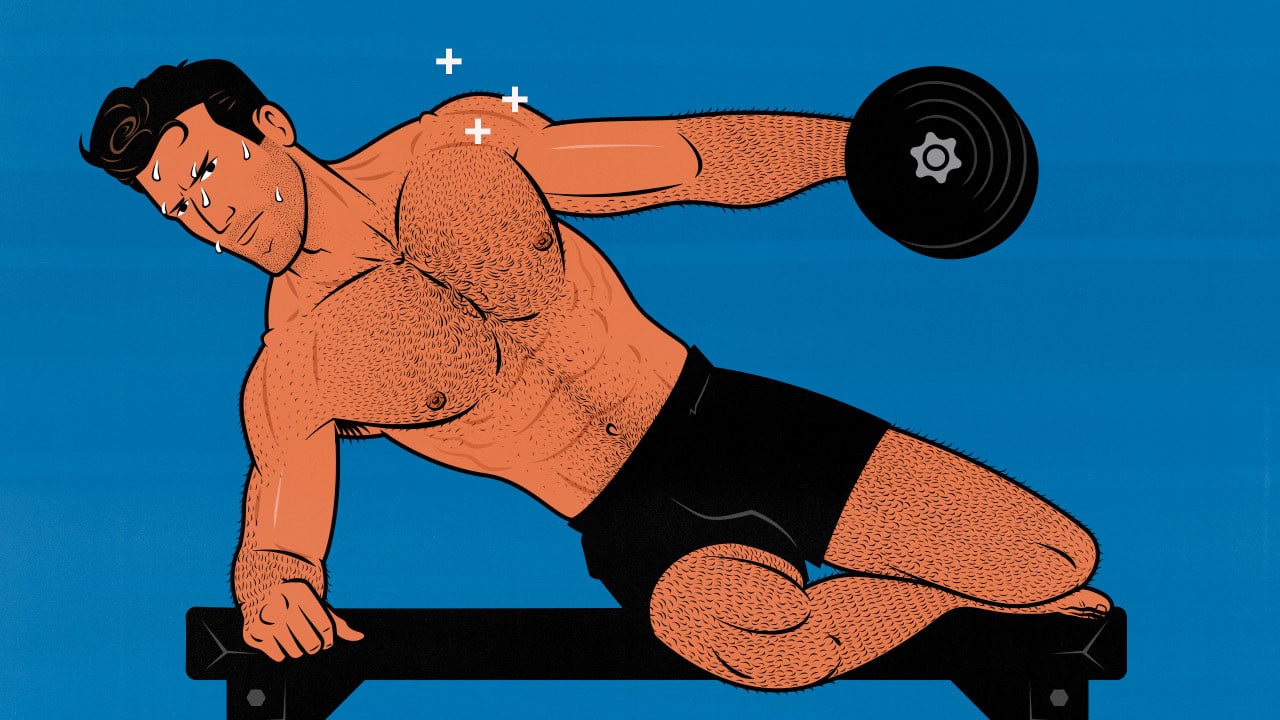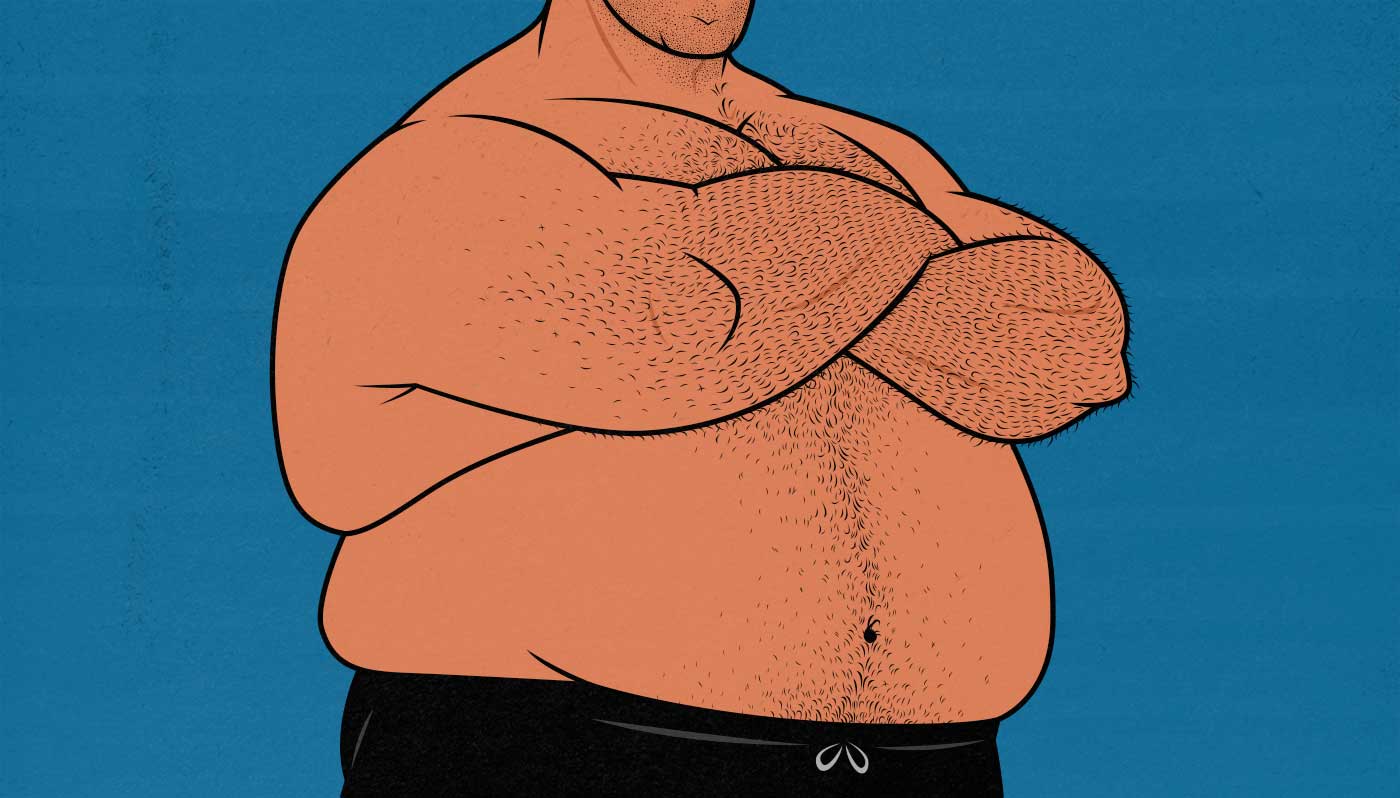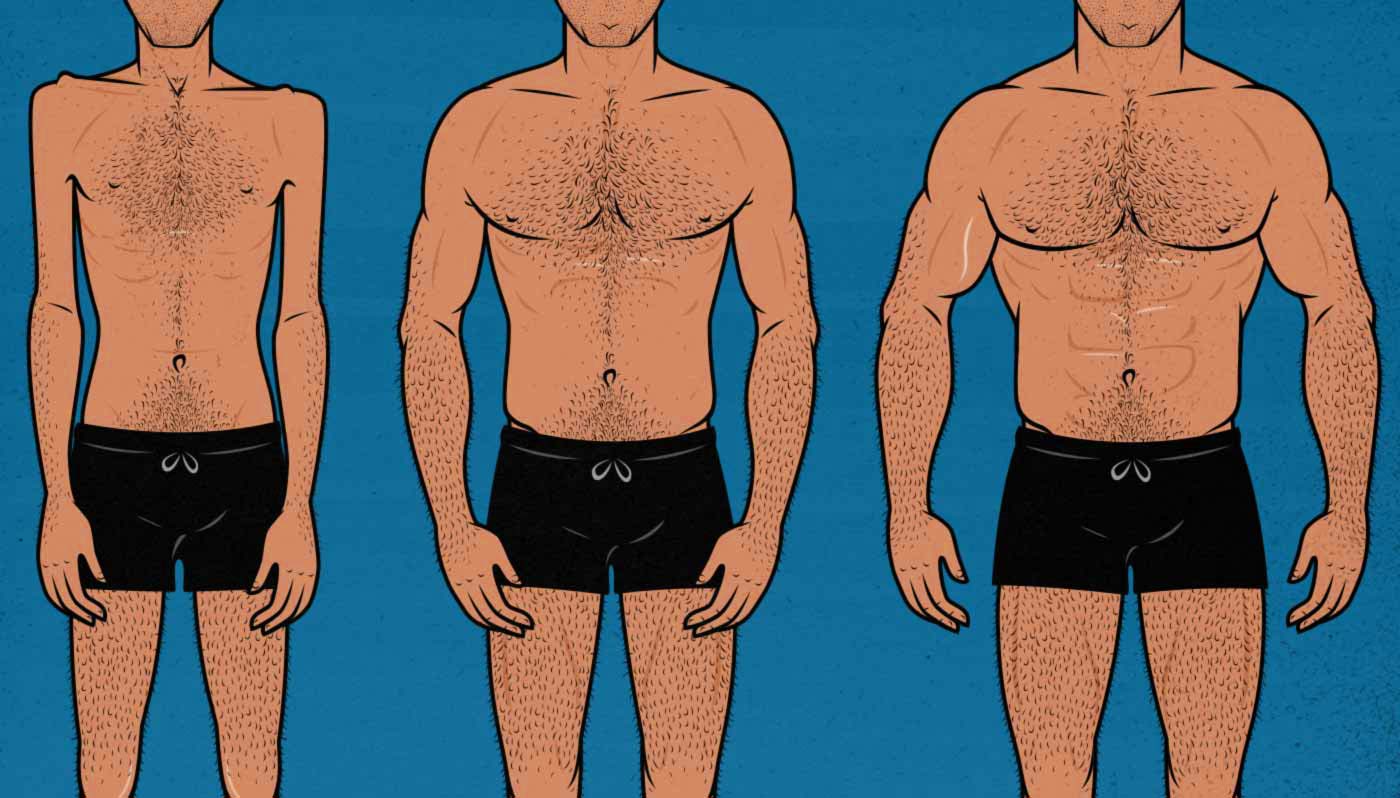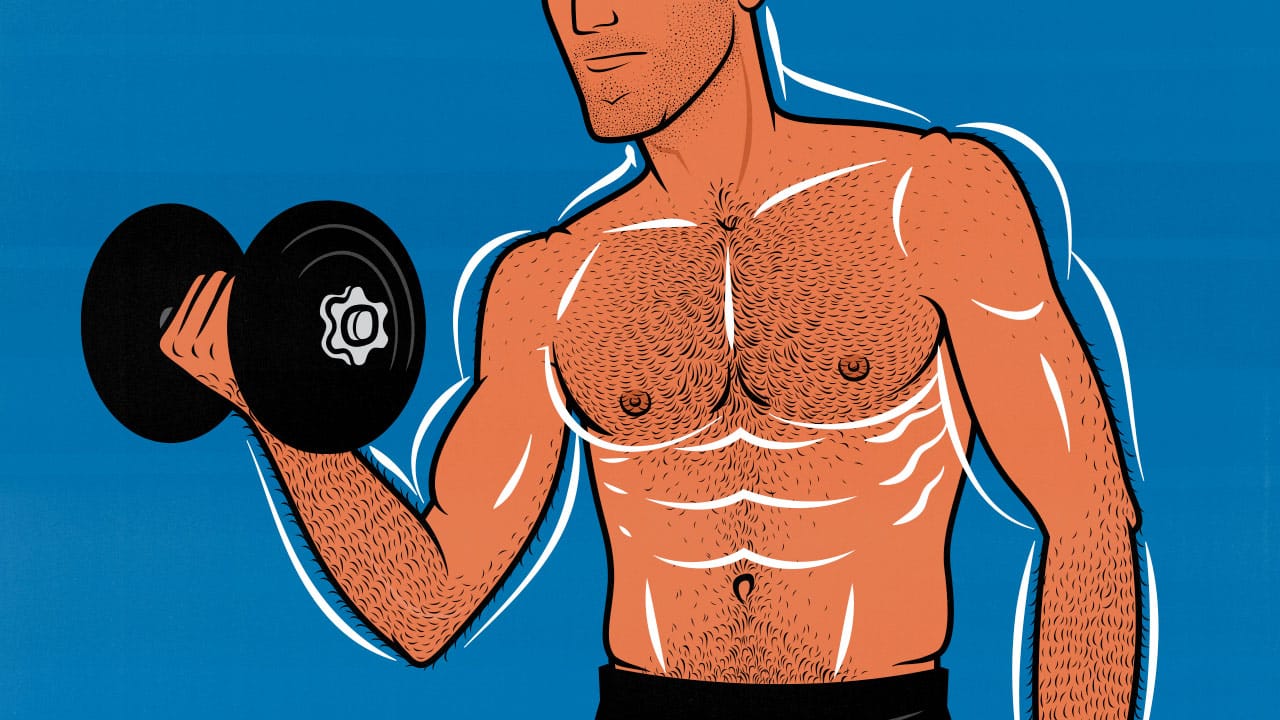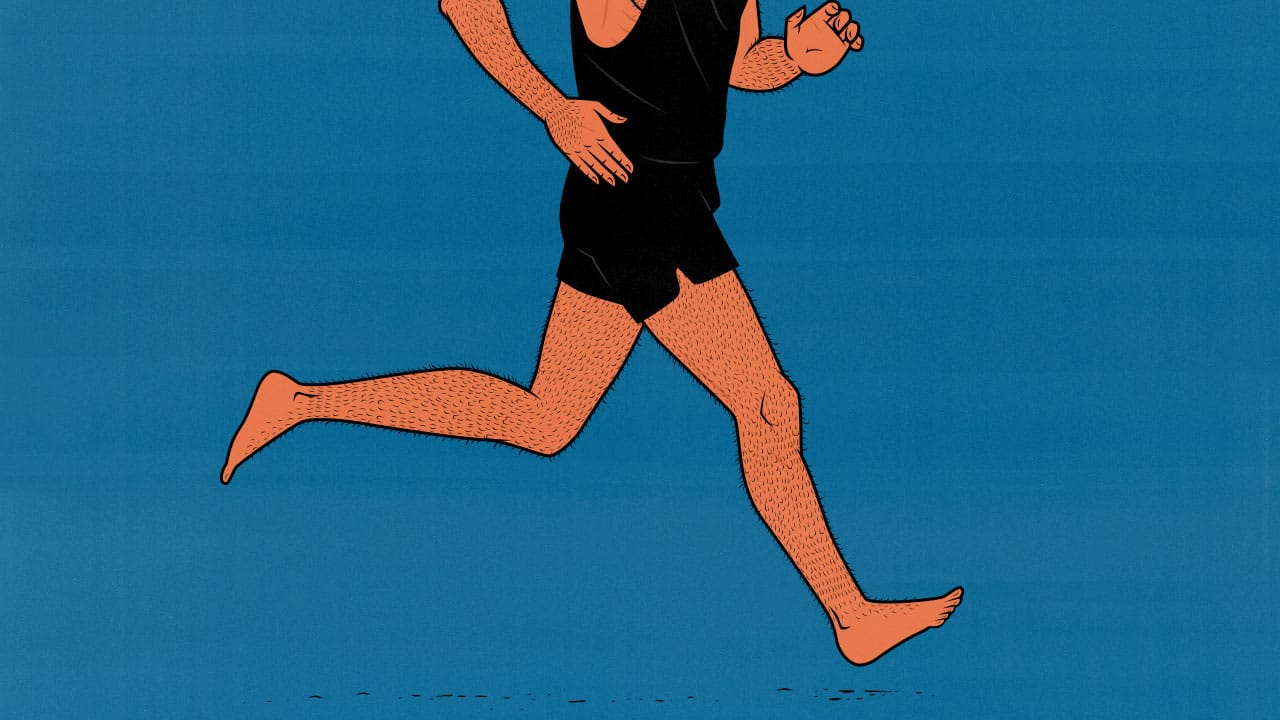Articles
How Much Protein Should You Eat at Breakfast to Build Muscle?
There are two recent studies that I found interesting. The first looked at whether going from a low-protein breakfast to a moderate-protein breakfast would improve muscle growth. The second looked at the effects of going from a moderate amount of protein to a massive amount of protein.
If we look at both studies, we get a pretty good idea of how much protein you should eat at breakfast.
Read MoreHow We Went From Skinny to Muscular (+70 Pounds of Muscle)
Jared and I were skinny graphic designers. We didn’t know anyone who ate a good diet, lifted weights, or exercised. We didn’t know anyone fit or muscular. But I was clinically underweight and suffering from early signs of cardiovascular disease, and Jared had crippling tendonitis that prevented him from working his desk job.
We didn’t know anything about building muscle. I thought we could gain all the muscle we needed with a 30-day bulking challenge, and I convinced Jared to try it with me. That’s how “Muscle May” began. That’s what inspired our entire Bony to Beastly business.
After 30 days, we’d gained over thirty pounds between us. It was working. We were finally gaining weight! So we doubled down, extending our pact for another three months. By the end of those three months, we’d gained almost 60 pounds of muscle between us. Since then, I’ve gained another 30 pounds.
Here’s the full story of how we went from skinny to muscular.
Read MoreThe Best Side Delt Exercises Are Weird Lateral Raises
The overhead press is the best overall shoulder exercise. If you want a minimalist workout routine, that’s all you need. If you really want to build bigger side delts, though, it pays to include an exercise that trains them directly.
Lateral raises are the best exercise for your side delts, and they can take you quite far, but you can do even better. Lateral raises are easy to improve upon. Here’s how.
Read MoreShould You Lift More Weight or Do More Reps to Build Muscle?
The top search result for this question is wrong, and it’s bugging me. There’s this old myth that heavier weights are better for building muscle while lighter weights are better for gaining endurance. That’s not quite right.
Both low-rep and high-rep sets can be equally good for building muscle. Anywhere from 4–40 reps per set stimulates a similar amount of muscle growth. Doing 6–20 reps tends to be a little easier and more efficient. Most bodybuilders lift right in the middle, favouring 8–12 reps.
However, different rep ranges provoke slightly different adaptations. The best way to build muscle is to take advantage of both. A balanced muscle-building program will use a mix of heavier weights and higher reps. More on that in a moment.
This begs another question: when you progressively overload your exercises, should you focus on adding more weight or adding more reps? Both can be equally good for building muscle. It all depends on what exercise you’re doing and what you’re trying to accomplish.
Read MoreDoes Bulking Make You Fat?
Bulking can make you fat if you gain weight too aggressively for too long. Eating in a calorie surplus is great for building muscle, but any calories that aren’t invested into muscle growth will spill over into fat gain.
If you’re eating so much food that you’re gaining fat, you might notice, but the changes happen so gradually that many people don’t. In our program, we solve this by having you weigh yourself every week and take new body measurements and progress photos every 5th week. We review those photos together, and we adjust your rate of weight gain.
Other guys like the extra size. They like filling out their clothes. They know they’re gaining fat, but they don’t care, so they keep eating in an aggressive surplus. I don’t have any issue with that. Most of these people never get fat enough to cause a health problem. It’s a purely cosmetic issue, and they prefer how they look when they’re bigger.
If you’re worried about gaining fat, you can do a lean bulk. If you’re already fat, the news is even better. You might be able to lose fat while building muscle.
Read MoreThe Skinny Guy’s Guide to Building Bigger Abs
It’s common for skinny guys to be lean and still not have abs. That’s because there are two parts to having good muscle definition: body-fat percentage and muscle size. Our body fat percentage is fine, but our abs aren’t big enough.
If you try to search for information about how to get abs, you’ll probably come across one of two recommendations:
- Abs are built in the kitchen, not the gym: The idea is to focus less on building bigger abs and more on getting lean enough to reveal your abs. But many of us are already lean enough. You might not need to get any leaner. You might do better by gaining weight.
- Abs are built with ab circuits: The most popular ab workouts are high-rep, low-rest circuits. Those circuits will absolutely stimulate muscle growth, but they’re needlessly painful, and they aren’t as effective as hypertrophy training.
Neither of these recommendations is great for us. We need to build bigger ab muscles. We need a proper bulking routine for our abs.
Dive inDo You Need to Bulk to Build Muscle?
Bulking is when you eat in a calorie surplus to give your body the nutrients it needs to grow. Not everyone needs to start by bulking. If you’re a skinny-fat or overweight beginner, you can get the energy you need from your extra body fat.
- If you’re thin or lean, then you don’t have any extra body fat to burn, so you’ll need to get it from your diet. You’ll need to eat in a calorie surplus. You’ll need to bulk to build muscle.
- If your goal body weight is heavier than your current body weight, then you need to eat in a calorie surplus to get there. That means you need to bulk.
- If you’re an experienced lifter, your body won’t grow as readily as it used to. You might need to get into a calorie surplus to continue making gains. Again, you need to bulk.
The problem with bulking is that it increases your risk of gaining fat. Any surplus calories that aren’t invested into muscle growth can spill over into body fat. That’s why so many people fear it. Those fears are largely unfounded, but I understand the hesitation.
In the rest of the article, we’ll go over the research, explain why a calorie surplus improves muscle growth, and then teach you how to bulk up leanly.
Read MoreWhat is Bulking Season?
Bulking season is the time of year when you intentionally gain weight to support muscle growth. It’s part of a long tradition of setting aside certain parts of the year for performance and other parts of the year for improvement. There’s a surprising amount of wisdom in that tradition.
It’s similar to the “off-season” athletes have. It’s the period of the year when they aren’t competing, allowing them to focus on getting bigger, stronger, and fitter. The most relevant example is bodybuilders. They need to get lean for their bodybuilding competitions, meaning they need to spend several months cutting. During that period, they have so little body fat and eat so little food that they have no hope of building any muscle. Their “off-season” is a chance to get into a calorie surplus, regain a healthy amount of body fat, and start building muscle again.
“Bulking season” is far more casual, but it offers even greater advantages.
Read MoreAre Carbs Good for Building Muscle? Yes, Here’s Why
Most people associate muscle growth with protein, but classic bodybuilding diets contain up to 60% carbohydrates. These diets get far more of their calories from starchy carbs like oats, rice, beans, potatoes, and pasta. Is that the correct approach? Are carbs actually good for building muscle?
Interestingly, that’s the same proportion of carbs the healthiest cultures in the world eat. Is there a benefit to eating so many carbs?
Read MoreShould You Do Cardio While Bulking? Yes, Sort Of
Hypertrophy training is designed to stimulate muscle growth. You adapt by growing bigger, stronger muscles, but it won’t improve your cardiorespiratory health very much.
Cardio makes you fitter. You adapt to draw more blood into your heart, build more blood vessels, and produce more energy in your mitochondria. It’s great for you, but it won’t make you bigger or stronger.
Thus, a balanced workout routine includes both.
Here’s the problem: Doing both hypertrophy training and cardio at the same time causes us to adapt in two complementary but competing ways. You only have so much energy, only so many resources, so you can’t maximize every adaptation all at once. This is called the interference effect.
On the other hand, if cardio makes you fitter, you’ll be able to handle tougher hypertrophy training workouts. If it improves blood flow to your muscles, you’ll have improved performance and better recovery. There are muscle-building advantages to doing cardio, too.
Things get even more confusing if you’re a naturally thin “ectomorph” or “hardgainer.” The more cardio you do, the more calories you’ll burn and the more food you’ll need to eat. If you’re already struggling to eat enough to gain weight, that can be a problem.
More
